
Middle School Classroom Circuits
ABL Classroom Circuits are portable and assist in creating a school wide environment of Action Based Learning for Middle School Students (Grades 6th-8th). Circuits include age appropriate equipment and activities, designed to assist the educator in teaching and meeting standard curriculum requirements.
All ABL equipment and support materials included on the circuits are geared for accommodating curriculum in: Math, ELAR, Social Studies, and Science.
Classroom Circuits include:
ABL Circuits include support materials, Academic Charts, Student and Teacher Cue Cards, Activity Guides, ABL Academic Mats, and ABL accessories/equipment that can be quickly pulled off the circuit and used in the hallways, classrooms, and common areas.
Intro phone consultation and training w/ ABL Master Trainer: FREE
Middle School Classroom Circuits - View ABL Stations
How do the circuits work at the middle school level?
- This is not a program, but a teaching tool for educators, and learning tool for students.
- Equipment allows teachers to integrate academics with physical movements to help students anchor learning.
- Educators can also use the circuit activities without academics for quick purposeful movement activities that prepare the brain to learn throughout the day!
- Portability means circuit can be shared between classrooms and adapted to fit various content areas within the subject.
Why are purposeful movement activities important?
Neuroscience shows the relationship between the brain and body plays a critical role in the student's ability to learn. Research shows practicing specific movements can strengthen these connections and improve reading, writing, memory tasks, and allow students to absorb & retain information more efficiently.
ABL Classroom Circuits are a budget friendly and efficient way to implement Action Based Learning Strategies to reach more students to increase activity throughout the school day and create an active school culture.
What types of purpose movement activities are critical to learning?
There are 12 critical areas necessary for a student to develop in order to achieve their full academic potential. These are called the 12 Foundations of Learning Readiness:
1- Crossing the Midline - Cross Lateralization















![Student Pedal Desk [6-12th Grade] - Action Based Learning](http://abllab.com/cdn/shop/files/Screenshot_2024-07-31_at_1.39.27_PM_{width}x.png?v=1722447617)
![Student Pedal Desk [6-12th Grade] - Action Based Learning](http://abllab.com/cdn/shop/files/Screenshot2024-08-05at3.25.53PM_{width}x.png?v=1722885959)
















![Student Pedal Desk [K-2nd Grade] - actionbasedlearning](http://abllab.com/cdn/shop/products/Untitleddesign_26_{width}x.png?v=1620933979)

![Student Pedal Desk [K-2nd Grade] - Action Based Learning](http://abllab.com/cdn/shop/products/Markerboard_4_83167fda-506c-489a-a9b2-16346d50d41d_{width}x.png?v=1724419521)






